LWON is celebrating the holidays by re-running some of our favorite posts. This post originally appeared in March 2014.
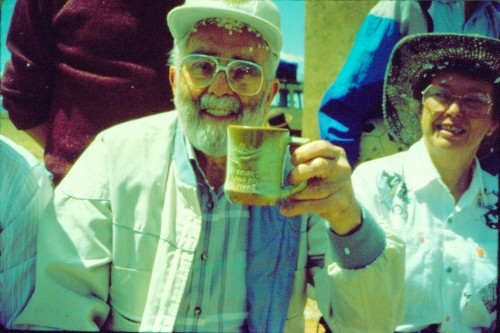 In the May issue of the Rotarian Magazine next month you will be able to read the full version of a story I did last year on toxic mine runoff in highland Bolivia. It’s a nice story of a tiny valley high in the mountains and the quixotic efforts to clean its water for the people living downstream. It’s got the usual cast – dedicated scientists, NGOs, recalcitrant mine owners.
In the May issue of the Rotarian Magazine next month you will be able to read the full version of a story I did last year on toxic mine runoff in highland Bolivia. It’s a nice story of a tiny valley high in the mountains and the quixotic efforts to clean its water for the people living downstream. It’s got the usual cast – dedicated scientists, NGOs, recalcitrant mine owners.
But there is one tale I found during my reporting that didn’t make it into the story. It’s a tale of Francis “Steve” Stephenson, who owned a small bookstore in Tulsa, Oklahoma. And the hundreds of lives he saved. The story starts with Steve’s son, David, a Methodist minister who’s worked on water projects in Bolivia for more than three decades. Back in 1989, he was planning a trip to visit towns outside of La Paz that were struggling to find stable sources of clean water.
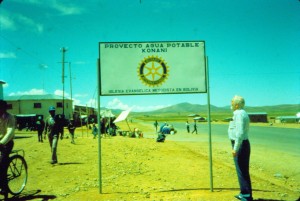 Just for the hell of it, he invited his septuagenarian dad, who ran a bookshop called Steve’s Books and Magazines, to come along and was a little surprised when he agreed. Highland Bolivia is a stark place; a wide open rural expanse of monstrous hills, cripplingly corrupt dysfunction, and some of the toughest people you’ll ever meet.
Just for the hell of it, he invited his septuagenarian dad, who ran a bookshop called Steve’s Books and Magazines, to come along and was a little surprised when he agreed. Highland Bolivia is a stark place; a wide open rural expanse of monstrous hills, cripplingly corrupt dysfunction, and some of the toughest people you’ll ever meet.
In 1989, there wasn’t a whole lot of clean water in this part of the world and many villages had to watch dozens of their children die every year to disease and the dehydration related it.
The need was huge and the resources small. So before they met with local leaders, David gave his father and the other American with him some crucial advice. “I told everybody, ‘Don’t promise. They get promised a lot of things that never happen. If they ask for anything, tell them you will have to talk to me about it. Whatever you do, don’t promise anything,'” the younger Stephenson says in his wonderful Oklahoma drawl.
The two parted ways and the father met with elders from the tiny rural town of Konani while the son attended to business. Hours later, they got back together for dinner. Steve looked deeply troubled. He had visited drinking wells that were filthy, some that even had frogs living in them. “These people are dying from the water,” he said, outraged. David, starting to sweat, asked what his father had done. Steve replied, “I told them we would build them a water tower.”
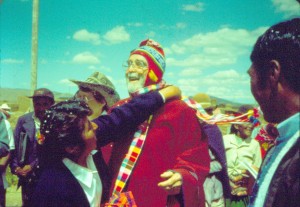
The younger Stephenson was mortified. “Aw, for the love of… you didn’t! You told me you’d tell them you’d come to me!”
“No, I did. I said we’d do it in six months,” the elder replied.
“Aw, Jiminy Christmas, Dad, this country can’t do anything in six months!”
And it just went downhill from there. David peppered his dad with questions. Is there even water in the ground? How’ll they find it? Who’ll dig the well? Are there any drilling rigs? Who’ll build the tower? To each question, Steve just shrugged and said it would be fine.
“What?! You’ve only been here a week!” David said. So the Stephensons went home to the prairie and started working. The elder pulled together $20,000 and put it towards the project. But they still had no idea where to dig. Then, one day, a guy from a Tulsa oil drilling company called Parker Drilling came into Steve’s Books and Magazines. He struck up a conversation with the kindly guy behind the counter. He was a nice old guy and seemed all fired up about some project in Bolivia.
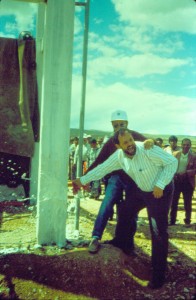
As it happened, Parker Drilling had searched high and low in Bolivia for oil without any success. By this point they had no idea where any oil might be and had pretty much given up. But they knew exactly where all the water was.
A few months later, a man in a uniform showed up in Konani driving a pickup truck with an odd insignia on the sides. He spoke to no one but walked in a few wide circles until he stopped, knelt down, and drove a spike into the ground. He looked at the bewildered townspeople and said “Drill here” and drove off.
Konani’s first water tower didn’t happen in six months but it did happen. In 1993, it started pumping out clean, drinkable water for the first time. The local missionary called up David Stephenson and told him there would be a town-wide party to celebrate the new well and that he and his father were invited. David chuckled and said “yeah, right.”
He called his dad to let him know and got a very short answer. “David, we’re going,” he said. “It’s the most important thing I’ve done in my life. And I’m taking your mother.” So they went and danced with the rest of the town around the water tower. In 2001, they went back a second time and Steve was treated as a guest of honor.
“They keep introducing my father as ‘Dr. Stevenson.’ I say, ‘He owns a frigging bookstore in Oklahoma – don’t go making his ego any bigger than it is. He’s no doctor.’ This goes on for a while. And finally the elder slams his fist on the table and says, ‘Let me tell you something, young man.’ He points at me and says, ‘before this well went into place, we lost between ten and fifteen children every year to water-borne diseases, including my children. And since this man brought in the water we lose one or two a year. That means that my children, my son’s children will not die. He’s done more for the health of this community than any doctor ever could. I’m going to call him Doctor de Agua. The Doctor of Water.’ Dad turned to me and said, ‘I want that on my tombstone.”
Later, another water tower was built by the government and quickly started leaking. But not Steve’s tower. No, it stands to this day, tight as a drum. Every day, if you look for it, you can read stories from the world’s worst people doing the worst things to the world. But in Konani, Bolivia you can see the power of a single person. The power of a normal guy stepping outside his small bookstore, listening to people in need, and keeping a promise.
And if you happen to go to Tulsa Oklahoma, swing by the cemetery while you’re there. Walk past the rows of gravestones and listen to the trees. And if you walk far enough, you can find it.
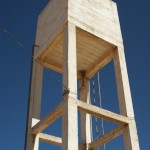
Francis W. (Steve) Stephenson
January 7 1918 – November 22, 2011
Doctor de Agua
Photo Credit: David Stephenson and Erik Vance. To learn more about David’s work in Bolivia, visit Engineers in Action.
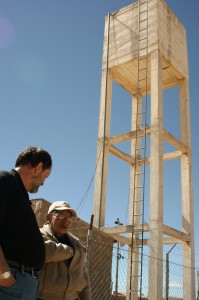
I thought this was a wonderful story.
Doctor de Agua. Salut.
Hi – i found this story especially inspiring. we take so much for granted in North America. One person’s vision and optimism created a light in the world. Salut indeed. hp
An inspiring story….testimony to how much good a determined, single minded individual can accomplish. Meanwhile, it was appalling to read that so many children were dying for lack of clean water. I blame the Bolivian government 100% for turning a blind eye to its citizens’ needs.
What an amazing man! It goes to show you that it doesn’t take a rocket scientist to figure it out just a little compassion.
Amen, Herman. Corruption is a truly evil thing. It’s worth mentioning that when I say dying of “dehydration,” it’s not because they didn’t have water. It’s because they drank bad water, got sick and got the runs. Small children lose a lot of fluid from diarrhea and by the time they get to the hospital it’s too late.